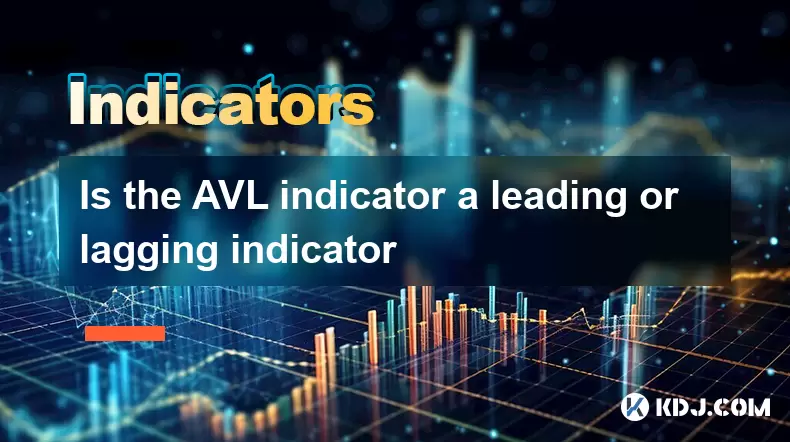-
 Bitcoin
Bitcoin $119,448.2396
0.27% -
 Ethereum
Ethereum $2,992.9919
0.78% -
 XRP
XRP $2.9074
1.58% -
 Tether USDt
Tether USDt $1.0001
0.00% -
 BNB
BNB $687.9097
-0.40% -
 Solana
Solana $161.5804
-0.47% -
 USDC
USDC $0.9998
0.01% -
 Dogecoin
Dogecoin $0.1948
-2.10% -
 TRON
TRON $0.3013
-0.08% -
 Cardano
Cardano $0.7286
-3.16% -
 Hyperliquid
Hyperliquid $47.3153
-3.81% -
 Stellar
Stellar $0.4543
-9.79% -
 Sui
Sui $3.8809
5.63% -
 Chainlink
Chainlink $15.6262
-0.55% -
 Hedera
Hedera $0.2368
-5.31% -
 Bitcoin Cash
Bitcoin Cash $501.2030
-0.80% -
 Avalanche
Avalanche $21.0650
-1.43% -
 UNUS SED LEO
UNUS SED LEO $9.0006
-0.39% -
 Shiba Inu
Shiba Inu $0.0...01310
-1.90% -
 Toncoin
Toncoin $3.0040
1.56% -
 Litecoin
Litecoin $93.8936
-1.20% -
 Monero
Monero $341.8918
1.27% -
 Polkadot
Polkadot $3.9087
-3.05% -
 Uniswap
Uniswap $8.9599
4.78% -
 Dai
Dai $0.9999
0.02% -
 Ethena USDe
Ethena USDe $1.0005
-0.02% -
 Bitget Token
Bitget Token $4.3954
-0.14% -
 Pepe
Pepe $0.0...01207
-2.26% -
 Aave
Aave $314.5223
1.72% -
 Bittensor
Bittensor $408.6988
2.76%
Is the AVL indicator a leading or lagging indicator
The AVL indicator, though more responsive than traditional moving averages, is a lagging indicator that helps filter noise and identify trends in cryptocurrency trading.
Jul 15, 2025 at 02:28 pm

Understanding the AVL Indicator in Cryptocurrency Trading
The AVL indicator, also known as the Arnaud Legoux Moving Average (ALMA), is a technical analysis tool used by traders to identify potential price trends and reversals. In the context of cryptocurrency trading, understanding whether the AVL indicator serves as a leading or lagging indicator becomes crucial for making informed decisions.
Unlike traditional moving averages that tend to follow price action with a delay, the AVL indicator applies a weighted average using a Gaussian distribution. This approach gives more emphasis to recent prices while reducing noise from older data points. As a result, it aims to be more responsive than standard moving averages like the Simple Moving Average (SMA) or Exponential Moving Average (EMA).
The key takeaway here is that the AVL indicator is generally considered a lagging indicator, although it attempts to reduce lag through its unique calculation method.
How the AVL Indicator Works
To determine if the AVL indicator is leading or lagging, it's important to understand how it functions. The formula involves three parameters:
- Window length: Defines how many previous periods are considered.
- Offset: Determines where the peak of the Gaussian distribution falls within the window.
- Sigma: Controls the width of the Gaussian curve.
These settings allow the AVL indicator to adjust sensitivity and smoothness. By placing more weight on recent prices through offset values, it can appear more reactive compared to traditional moving averages.
However, since it still relies on historical price data, the AVL indicator cannot predict future price movements. It reacts to what has already occurred in the market, which classifies it fundamentally as a lagging indicator.
AVL vs. Leading Indicators in Crypto Markets
In contrast to lagging indicators, leading indicators attempt to forecast future price direction based on momentum, volume, or sentiment signals. Examples include the Relative Strength Index (RSI) and Stochastic Oscillator, which often signal overbought or oversold conditions before price reversals occur.
The AVL indicator, despite being smoother and slightly more responsive than other moving averages, does not offer predictive capabilities. Its purpose is to filter out short-term volatility and help traders visualize trend direction more clearly.
Therefore, when applied to volatile cryptocurrency assets such as Bitcoin or Ethereum, the AVL indicator should be used alongside true leading indicators to improve timing and accuracy in trade entries and exits.
Using AVL Indicator in Real-Time Crypto Trading
When applying the AVL indicator to live crypto charts, traders typically look for crossovers between the indicator line and the price itself. Here’s how you can set it up:
- Open your preferred cryptocurrency charting platform (e.g., TradingView).
- Search for the AVL indicator in the indicator library.
- Set the default parameters (usually 9-period window, offset of 0.85, sigma of 6), though these can be adjusted based on strategy.
- Apply the indicator to the chart.
Once plotted, watch for the following signals:
- When the price crosses above the AVL line, it may indicate a bullish trend.
- A cross below the AVL line could suggest a bearish shift.
Because it lags behind actual price movement, false signals may occur during sideways or choppy markets. That’s why many traders combine the AVL indicator with oscillators or volume-based tools to confirm trade setups.
Common Misconceptions About AVL Indicator Classification
A common misconception among novice traders is that because the AVL indicator is smoother and less noisy than EMA or SMA, it must be a leading indicator. However, this is not accurate. The smoothing effect comes from its weighting mechanism, not from any forward-looking data.
Another misunderstanding arises when traders observe the AVL line appearing close to current price action and assume it predicts turning points. What they're actually seeing is a delayed but filtered version of past prices.
This reinforces the fact that no amount of smoothing or weighting can transform a moving average into a truly leading indicator. The AVL indicator remains rooted in historical data and thus retains its classification as a lagging indicator.
FAQs About AVL Indicator in Cryptocurrency Context
Q: Can the AVL indicator be used effectively in day trading cryptocurrencies?
Yes, the AVL indicator can be effective in day trading, especially when combined with volume indicators or momentum oscillators. Traders use it to spot early trend shifts after filtering out market noise.
Q: Is there a way to make the AVL indicator more leading in nature?
While you cannot turn a lagging indicator into a leading one, adjusting the offset and sigma values can increase responsiveness. Lowering the sigma value makes the curve sharper, increasing sensitivity to recent price changes.
Q: How does the AVL indicator compare to other moving averages in crypto trading?
Compared to traditional moving averages, the AVL indicator tends to generate fewer false signals due to its weighted averaging method. It provides a cleaner visual representation of trend direction, particularly useful in highly volatile crypto markets.
Q: Should beginners rely solely on the AVL indicator for trading decisions?
No, relying solely on the AVL indicator is not advisable. Beginners should use it in combination with other tools such as support/resistance levels, candlestick patterns, and volume analysis to form a well-rounded trading strategy.
Disclaimer:info@kdj.com
The information provided is not trading advice. kdj.com does not assume any responsibility for any investments made based on the information provided in this article. Cryptocurrencies are highly volatile and it is highly recommended that you invest with caution after thorough research!
If you believe that the content used on this website infringes your copyright, please contact us immediately (info@kdj.com) and we will delete it promptly.
- Yukon Handgames: Carcross First Nation's Cultural Renaissance
- 2025-07-15 16:50:12
- Dogecoin's Key Zone: Will DOGE Break Out?
- 2025-07-15 18:10:12
- Strategy's Bitcoin Bonanza: 600,000 BTC and Beyond!
- 2025-07-15 16:30:12
- Whale Wallets Pounce on PUMP Token Dip: Smart Money Moves?
- 2025-07-15 18:10:12
- SEI Token's Wild Ride: Price Jump and the Looming Unlock Event
- 2025-07-15 18:15:11
- Blockchain, Bitcoin, and Treasury Strategy: A New Era of Finance
- 2025-07-15 17:00:12
Related knowledge

Advanced RSI strategies for crypto
Jul 13,2025 at 11:01am
Understanding the Basics of RSI in Cryptocurrency TradingThe Relative Strength Index (RSI) is a momentum oscillator used to measure the speed and chan...

Crypto RSI for day trading
Jul 12,2025 at 11:14am
Understanding RSI in the Context of Cryptocurrency TradingThe Relative Strength Index (RSI) is a momentum oscillator used to measure the speed and cha...

Crypto RSI for scalping
Jul 12,2025 at 11:00pm
Understanding RSI in the Context of Crypto TradingThe Relative Strength Index (RSI) is a momentum oscillator widely used by traders to measure the spe...

What does an RSI of 30 mean in crypto
Jul 15,2025 at 07:07pm
Understanding RSI in Cryptocurrency TradingRelative Strength Index (RSI) is a momentum oscillator widely used in cryptocurrency trading to measure the...

What does an RSI of 70 mean in crypto
Jul 13,2025 at 06:07pm
Understanding the RSI Indicator in Cryptocurrency TradingThe Relative Strength Index (RSI) is a widely used technical analysis tool that helps traders...

How to avoid RSI false signals in crypto
Jul 13,2025 at 06:21pm
Understanding RSI and Its Role in Crypto TradingThe Relative Strength Index (RSI) is a momentum oscillator used to measure the speed and change of pri...

Advanced RSI strategies for crypto
Jul 13,2025 at 11:01am
Understanding the Basics of RSI in Cryptocurrency TradingThe Relative Strength Index (RSI) is a momentum oscillator used to measure the speed and chan...

Crypto RSI for day trading
Jul 12,2025 at 11:14am
Understanding RSI in the Context of Cryptocurrency TradingThe Relative Strength Index (RSI) is a momentum oscillator used to measure the speed and cha...

Crypto RSI for scalping
Jul 12,2025 at 11:00pm
Understanding RSI in the Context of Crypto TradingThe Relative Strength Index (RSI) is a momentum oscillator widely used by traders to measure the spe...

What does an RSI of 30 mean in crypto
Jul 15,2025 at 07:07pm
Understanding RSI in Cryptocurrency TradingRelative Strength Index (RSI) is a momentum oscillator widely used in cryptocurrency trading to measure the...

What does an RSI of 70 mean in crypto
Jul 13,2025 at 06:07pm
Understanding the RSI Indicator in Cryptocurrency TradingThe Relative Strength Index (RSI) is a widely used technical analysis tool that helps traders...

How to avoid RSI false signals in crypto
Jul 13,2025 at 06:21pm
Understanding RSI and Its Role in Crypto TradingThe Relative Strength Index (RSI) is a momentum oscillator used to measure the speed and change of pri...
See all articles

























































































